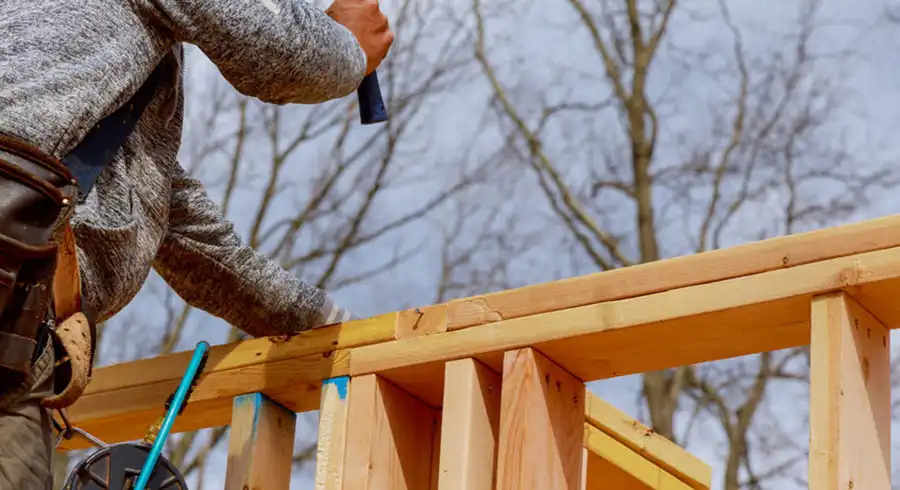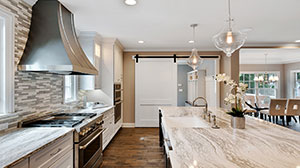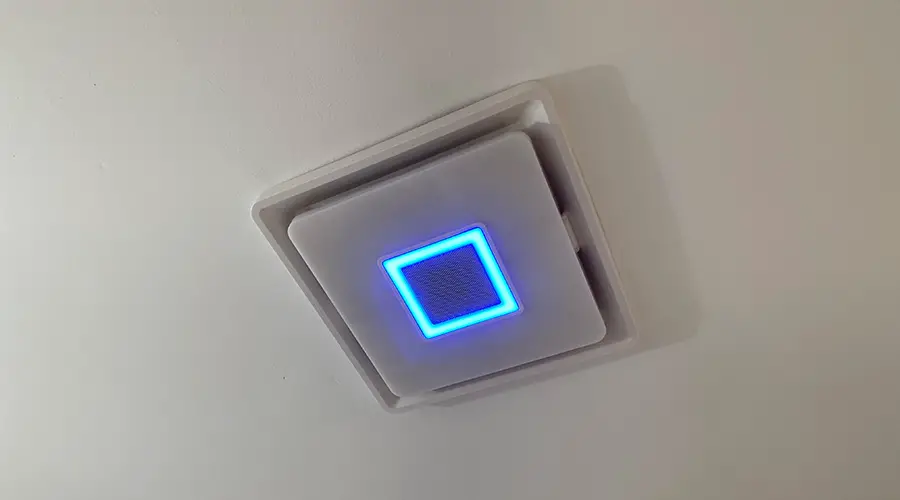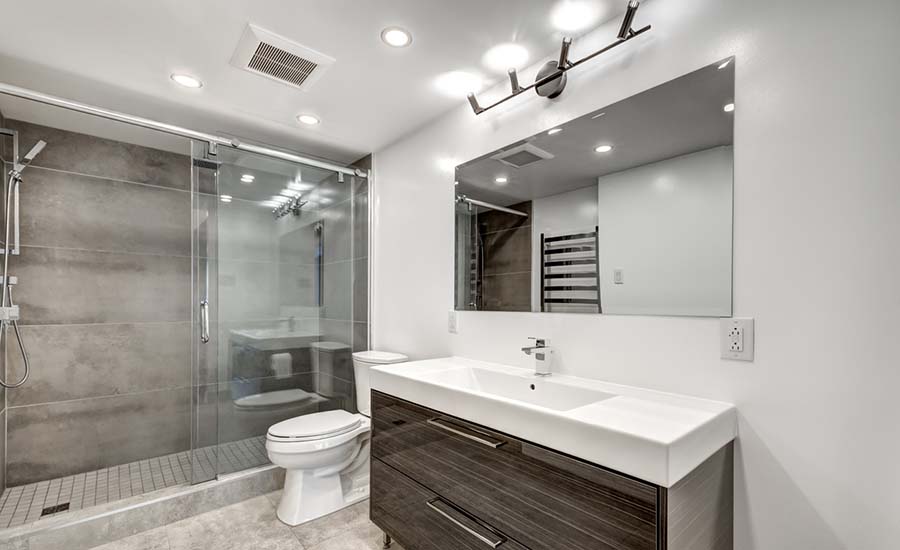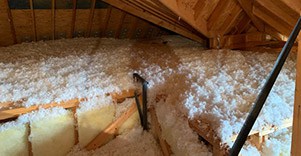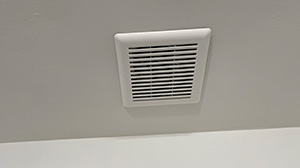There are some building codes to consider when installing or cleaning a roof dryer vent. According to the International Residential Code requirements on the venting duct length, a venting duct should not exceed the maximum length of 35 feet, starting from where the dryer is to the termination end, which could be the wall or the roof.
According to building codes, dryers must vent to the exterior. For dryer safety and efficiency, you should use the shortest and straightest ducting route to the outside. When dryers are on interior walls with no direct way to the exterior, they can vent through the roof.
Dryers venting through the roof need rigid metal ducting that extends straight to the roof exterior. Venting through the roof requires routine professional cleanings or the risk of lint build-up becoming a fire hazard.
The code reiterates that the venting duct should be as straight as possible from the start to the end. Turns and bends interrupt the airflow and could become potential catchment areas for lint.
Get FREE quotes from licensed building contractors in your area today. Whether you are remodeling or building a home or addition, We Can Help! All contractors are screened, licensed, and insured.
Understanding Roof Dryer Vents
It is common for households with slab foundations to vent their dryers through the roof. Though it is not popular with some contractors, builders, home inspectors, and vent cleaning technicians, this type of venting are commonplace in modern-day construction.
In the past, homeowners and venting system manufacturers focused more on getting the job done. Still, homeowners and constructors are more concerned about home beautification and greater efficiency, forcing vent duct manufacturers to up their game in today’s world.
Several scenarios can make a roof venting system the ultimate choice;
- The proximity to other homes – such as in townhomes where buildings are adjoined
- No other direct access to the exterior – such as laundry rooms on interior walls in slab foundations
- Aesthetics – where the venting affects building appearance or curb appeal
- Length of the duct – where the roof is the shortest route to the exterior
- Animal and rodent invasion – dryer vents low to the ground can be nesting locations for birds or be damaged by rodents
- Damage – children or pets can damage dryer vents low to the ground
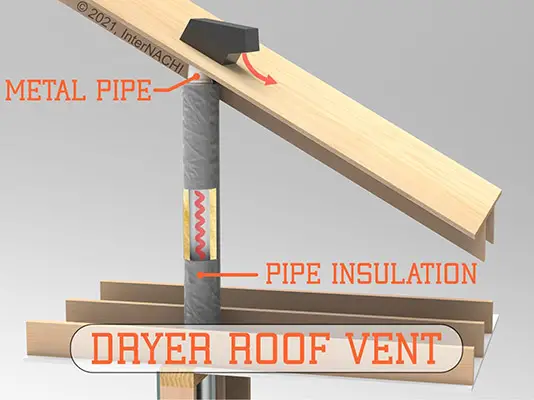
The Proximity of Other Homes
Proximity to the neighboring homes is born out of urbanization; the more people, the lesser space. Therefore, it has forced homeowners and contractors to make the best of available space.
Most often, you will find that modern homes do not have the luxury of a separate private compound. Wall ventilation becomes a little bit complicated near a building entrance or ventilation. The international code dictates that the venting duct terminates not less than three feet away from any direction.
No Other Direct Access To The Exterior
Concrete slab foundations are becoming the norm in building construction. When a dryer is along an interior wall in a concrete slab home, there is no access under the slab to run a dryer vent to the exterior. Directing a dryer to the roof becomes the only feasible option to vent the dryer outside.
Building codes say dryer vents can’t vent to a soffit, leaving the roof the only option. Dryers venting through the roof must have a rigid metal vent pipe and requires routine cleanings to prevent dryer fires. It would be best to have professional cleanings annually or as needed.
Aesthetics
Modern homes are keen on both style and beauty.
No one wants vents protruding from a wall and attracting attention. And because a roof vent duct stands at less than 5 1/2 inches above the roofing slope, it’s a low profile with minimal visibility.
Any homeowner considering beauty and visibility will probably go for roof dryer vents.
Length Of The Duct
As much as the International Housing Code recommends a 35-foot maximum length, several scenarios can prove that the shorter the run, the better the outcome.
From saving you the cost and hassle of a long run to complications in maintenance, shorter runs will save you money.
Longer runs require more energy. As heated moisture flows along a lengthy run, it may encounter friction and sometimes run into bends (if any) that act as speed bumps. As a result, the inside flow will be interrupted and need more energy to pick up speed.
When the runs are shorter, the duct will probably run straight.
Straight shorter runs minimize the chances of lint build-up and dryer overheating, translating to lower chances of a dryer fire.
Animal and Rodent Invasion
Many small animals and reptiles live outside our homes and thrive on the grass and gardens in rural or urban settings. Rats, lizards, and mosquitos, among others, will quickly find entry into the homes’ interior through the piping duct.
Birds also love to nest inside dryer vent pipes which can clog the vent and restrict airflow, causing your clothes not to dry correctly and increasing fire risk.
Damage to the Vent or Vent Cover
Because wall venting systems are easily accessible, children playing outdoors and even animals might get curious, resulting in a damaged duct.

What to Consider Before Installing a Dryer Vent Through a Roof
Aside from the International Residential Code endorsing roof venting as a safe way of terminating moisture resulting from cloth dryers, there are also other organizations whose verdict plays a relevant role in the adoption and consumption of household dryer venting products;
- Building Code
- Certified dryer exhaust technicians
- Appliance Manufacturers
Local Building Codes
The International Residential Code and The International Mechanical Code unanimously state that dryer vents should terminate the moist water vapor on the home’s exterior.
Venting a dryer through the roof meets building code requirements in most areas as long as the termination duct has no screen feature and contains a backdraft damper.
Dryers can’t vent to a soffit.
Certified Dryer Exhaust Technicians
In their books, the Certified Dryer Exhaust Technicians union does not recommend a venting location over another. Still, it does stress the need to have shorter runs built from rigid pipes and the importance of minimizing elbows and bends.
They also revised their notes on re-routing the venting system through the roof or the wall.
Appliance Manufacturers
All products and appliances come with a manual containing specific instructions while installing the product.
They also contain the specifications of the product. If you peruse through many dryer vent manuals, you will see that they have recommendations on roof installations.
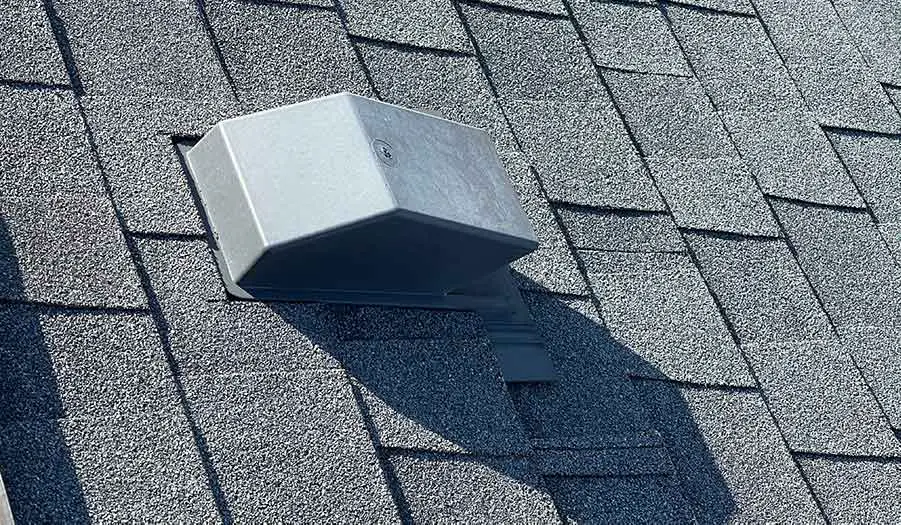
Why Roof Dryer Venting is a Bad Idea
Fire Hazard
Risk of Water Damage
More Difficult to Clean and Maintain
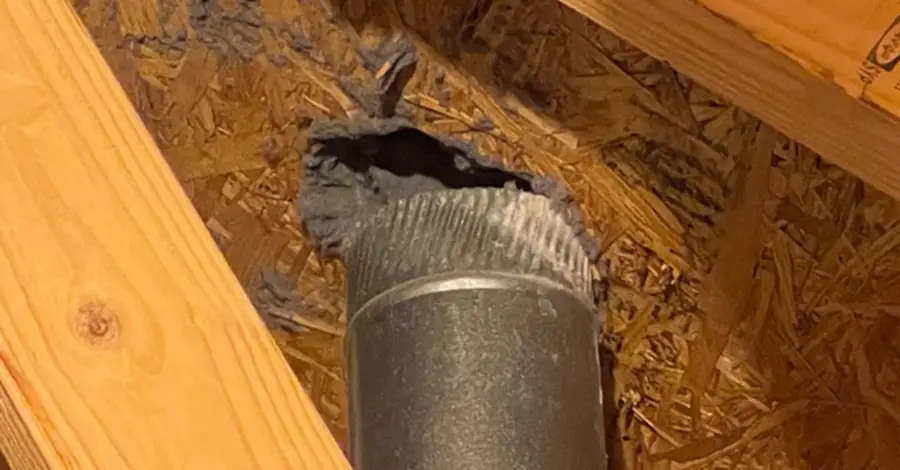
Roof Dryer Venting FAQs
Is it OK to vent a dryer through the roof?
According to building codes, you can vent a dryer through the roof. However, if possible, it is not recommended to vent a dryer through the roof. The best way to vent a dryer is through an exterior wall that leads directly outside and does not pass through the attic or any other enclosed space in the home.
Why do they put dryer vents on the roof?
Dryer vents are typically installed on the roof for practical reasons when no other path to the exterior exists. Roofs provide an unobstructed route for the warm and moist air from the dryer to escape, resulting in a shorter and more efficient venting system.
Do roof dryer vents have screens?
Unlike sidewall dryer vents, dryer vent covers for roofs don’t have screens but have a backdraft damper that closes when not in use.
How often should you clean dryer vent on roof?
Generally speaking, it is recommended that you clean your dryer vent on the roof at least once a year to prevent clogs and other problems. The frequency of dryer vent cleaning on the roof will depend on several factors, including the type of vent material used and the amount of lint and debris buildup.
Does a Dryer Vent Need to be Insulated?
Anytime a dryer vent runs through an unconditioned space, it should be insulated. Dryer vents have warm moist air running through them, creating condensation when exposed to unconditioned spaces and causing mold or water damage if the pipe isn’t insulated.
Can My Dryer Vent Go Through the Attic?
You can run your dryer vent through an attic if you insulate the pipe properly. Moisture and mold issues may arise if it is not insulated sufficiently due to the hot air inside, causing condensation from exposure to cold surroundings. To prevent this, ensure that your vent pipe is either insulated or low enough for the attic insulation covering it.
Conclusion
No matter what type of dryer vent you’re installing, there are always options. Running your vent up or down or all around is allowed, but remember that the shorter the pipe length, the better off you are. If the total distance of your dryer vent is more than 35 feet, then you’ll need a dryer booster fan to push the air and lint the rest of the way to the outside.
Whether you run the dryer venting yourself or have a professional install it, always remember the rules when running your vent pipe through unconditioned spaces. When in doubt, it’s always best to insulate and play it safe. Be smart, and make sure your vent is installed and maintained correctly for the best results and safety.


